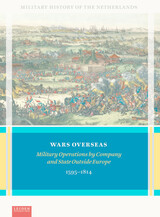3 books by Knaap, Gerrit

Environmental Program Evaluation
A Primer
Edited by Gerrit Knaap and Tschango John Kim: Foreword by Ravinder K. Jain
University of Illinois Press, 1998
This pioneer work in a complex, interdisciplinary, and still-developing field explores the prospects for a more comprehensive approach to evaluating environmental programs. Experts in the fields of biology, chemistry, ecology, economics, management, planning, sociology, political science, and public administration provide coherent, integrated perspectives on the task of environmental program evaluation. The essays are organized thematically, covering institutional, scientific, economic, and administrative topics. The volume will be a valuable text for practitioners, regulators, policymakers, and scholars in the fields of program evaluation, environmental policy, and environmental science.
[more]

Sustainability in America's Cities
Creating the Green Metropolis
Edited by Matthew I. Slavin
Island Press, 2011
"Sustainability" is more than the latest "green" buzzword. It represents a new way of viewing the interactions of human society and the natural world. Sustainability in America's Cities highlights how America's largest cities are acting to develop sustainable solutions to conflicts between development and environment.
As sustainability rises to the top of public policy agendas in American cities, it is also emerging as a new discipline in colleges and universities. Specifically designed for these educational programs, this is the first book to provide empirically based, multi-disciplinary case studies of sustainability policy, planning, and practice in action. It is also valuable for everyone who designs and implements sustainability initiatives, including policy makers, public sector and non-profit practitioners, and consultants.
Sustainability in America's Cities brings together academic and practicing professionals to offer firsthand insight into innovative strategies that cities have adopted in renewable energy and energy efficiency, climate change, green building, clean-tech and green jobs, transportation and infrastructure, urban forestry and sustainable food production. Case studies examine sustainability initiatives in a wide range of American cities, including San Francisco, Honolulu, Philadelphia, Phoenix, Milwaukee, New York City, Portland, Oregon and Washington D.C. The concluding chapter ties together the empirical evidence and recounts lessons learned for sustainability planning and policy.
[more]

Wars Overseas
Military Operations by Company and State Outside Europe 1595-1814
Gerrit Knaap
Leiden University Press, 2024
'Wars Overseas' focuses on Dutch military actions outside Europe in the early-modern period. Those actions were rooted in the Eighty Years’ War, the conflict between Spain and the northern Netherlands that led to the creation of the independent Dutch Republic. The Republic was determined to trade in tropical products from Asia, Africa and the Americas, commodities on which the Iberians had had a monopoly for a century or more. To do so, however, it would have to fight. The fledgling State did not itself have the resources for such an undertaking and effectively left it to two monopolistic trading companies, the Dutch East India Company or VOC and the Dutch West India Company or WIC.
In Asia, through an adroit policy of war and diplomacy, the VOC built a powerful trade-based empire that lasted for almost two centuries. The WIC began with a large-scale offensive in the Atlantic area, operating in both Africa and the Americas, albeit with less success than its sister company in Asia. In those conflicts overseas, empire builders like Jan Pietersz Coen and Johan Maurits of Nassau played crucial roles. How did they act? What resources did they have? And how did the military revolution in Europe impact the process of Dutch expansion overseas?
'Wars Overseas', the first comprehensive overview of Dutch military action in Asia, Africa, and the Americas, examines these and many other questions in detail, while thematic chapters focus on the deployment of sailors, soldiers and ships, on weapons and fortification-building, and on the confrontation with non-European allies and adversaries.
[more]
READERS
Browse our collection.
PUBLISHERS
See BiblioVault's publisher services.
STUDENT SERVICES
Files for college accessibility offices.
UChicago Accessibility Resources
home | accessibility | search | about | contact us
BiblioVault ® 2001 - 2024
The University of Chicago Press









